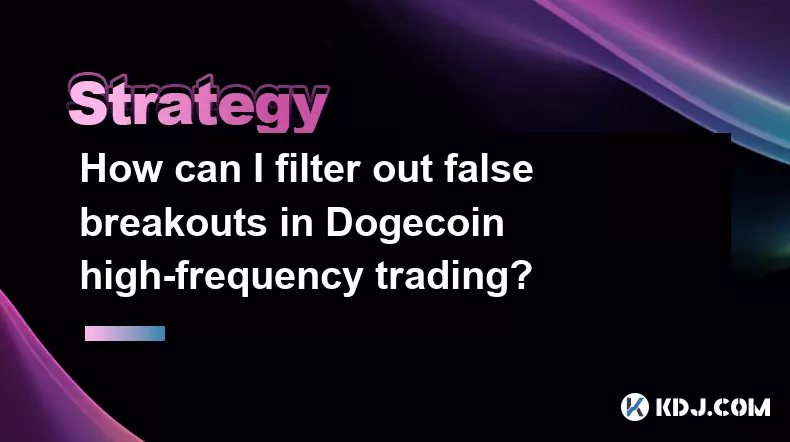-
 bitcoin
bitcoin $109547.008142 USD
0.04% -
 ethereum
ethereum $4011.838726 USD
-0.05% -
 tether
tether $1.000402 USD
-0.01% -
 xrp
xrp $2.798606 USD
0.88% -
 bnb
bnb $970.877944 USD
1.39% -
 solana
solana $202.237275 USD
-0.95% -
 usd-coin
usd-coin $0.999673 USD
0.00% -
 dogecoin
dogecoin $0.229294 USD
-1.15% -
 tron
tron $0.336370 USD
-0.45% -
 cardano
cardano $0.777260 USD
-1.66% -
 hyperliquid
hyperliquid $45.503019 USD
1.73% -
 ethena-usde
ethena-usde $1.000362 USD
0.01% -
 chainlink
chainlink $20.785303 USD
-1.10% -
 avalanche
avalanche $28.755822 USD
-0.11% -
 stellar
stellar $0.358303 USD
-0.48%
How to invest in blockchain digital currency
Investing in blockchain digital currencies requires thorough research and education to understand the underlying technology, market dynamics, and associated risks.
Jan 07, 2025 at 06:56 pm

Key Points
- Research and Education
- Choose a Cryptocurrency Exchange
- Create a Cryptocurrency Wallet
- Funding Your Account
- Analyze and Select Coins to Invest
- Invest in Cryptocurrency
- Monitor and Manage Your Investment
How to Invest in Blockchain Digital Currency
1. Research and EducationInvesting in blockchain digital currencies requires a thorough understanding of the underlying technology, market dynamics, and associated risks. Begin by educating yourself through reputable sources and advising from experienced investors or advisors in the field. Explore reputable crypto news portals, academic papers, industry reports, and interact with online communities forums to stay informed about the latest developments and trends.
2. Choose a Cryptocurrency ExchangeCryptocurrency exchanges are online platforms that allow you to buy, sell, and trade digital currencies using fiat currencies like USD or EUR. Numerous exchanges exist, each with distinct offerings. Research and compare the features of various exchanges, including fees, security measures, supported currencies, and reputation. Look for reputable platforms with robust security, transparency, and positive user reviews.
3. Create a Cryptocurrency WalletA cryptocurrency wallet is a digital software or hardware that stores your private keys, which are required for accessing and managing your digital assets. Private keys must be kept confidential, and it is essential to safeguard them securely. Choose wallets with robust security features and consider storing large amounts of currency in cold storage wallets for enhanced security.
4. Funding Your AccountBefore investing, you must fund your cryptocurrency exchange account with a designated digital wallet. Deposit fiat currency using various methods supported by the cryptocurrency exchange, such as bank transfers, credit/debit cards, or third-party payment processors. Once deposited, you can use deposited funds to purchase digital currencies.
5. Analyze and Select Coins to InvestThe cryptocurrency market comprises a vast selection of digital currencies, each with unique characteristics and use cases. Research different coins thoroughly by examining their underlying technologies, team credentials, market capitalization, and supply dynamics. Consider the investment objectives, risk tolerance, and research findings to identify potential coins for investment.
6. Invest in CryptocurrencyAfter selecting the digital currencies to invest in, determine the amount you wish to invest. It is crucial to invest only what one can afford to lose since cryptocurrency markets experience significant volatility. Begin investing with smaller amounts until you gain familiarity with the market and develop a solid investment strategy. Place buy orders on the cryptocurrency exchange and actively monitor the market to optimize returns and manage risks.
7. Monitor and Manage Your InvestmentInvesting in digital currencies is an ongoing process that requires continuous monitoring and management. Track the performance of your investments and stay informed about market news and updates. Actively manage your portfolio by adjusting positions, rebalancing, or taking profits as needed. Regularly review your investments and adjust your strategy in response to market movements and changes in investor sentiment.
FAQs
Q: What is blockchain technology?A: Blockchain technology is a decentralized and distributed digital ledger that records transactions across multiple computers, making them tamper-proof, secure, and transparent.
Q: What are digital currencies?A: Digital currencies, also known as cryptocurrencies, are decentralized digital assets that use cryptography for security and operate independently of central banks.
Q: What are some of the potential risks of investing in blockchain digital currency?A: Investing in blockchain digital currencies carries risks such as market volatility, fraud, security breaches, and regulatory uncertainties.
Q: What are some strategies for investing in blockchain digital currency?A: Strategies for investing in blockchain digital currencies include dollar-cost averaging, value investing, and trend following.
Q: What are some tips for beginner investors in blockchain digital currency?A: Tips for beginner investors include starting with small investments, conducting thorough research, diversifying portfolios, and managing risk effectively.
Disclaimer:info@kdj.com
The information provided is not trading advice. kdj.com does not assume any responsibility for any investments made based on the information provided in this article. Cryptocurrencies are highly volatile and it is highly recommended that you invest with caution after thorough research!
If you believe that the content used on this website infringes your copyright, please contact us immediately (info@kdj.com) and we will delete it promptly.
- Ethereum, Bitcoin Dominance, and the Altcoin Rally: A New York Minute on Crypto
- 2025-09-28 12:25:15
- RLUSD, XRP, and Open Interest: Decoding the Dynamics
- 2025-09-28 12:25:15
- Crypto Meme Coins: Unveiling the 2025 Potential
- 2025-09-28 12:25:16
- Crypto's Comeback: Solana, Polygon, and the Hunt for the Next Moonshot
- 2025-09-28 12:25:16
- Stablecoins, Financial Transactions, and the Future World: A New York State of Mind
- 2025-09-28 12:30:12
- XRP, Competitor, PDP Climb: Decoding the Crypto Landscape in 2025
- 2025-09-28 12:30:12
Related knowledge

Practical parameter settings for a Bitcoin multi-timeframe moving average system
Sep 18,2025 at 10:54pm
Optimizing Timeframe Combinations for Bitcoin Trading1. Selecting appropriate timeframes is crucial when building a multi-timeframe moving average sys...

How can I filter out false breakouts in Dogecoin high-frequency trading?
Sep 22,2025 at 01:00am
Understanding False Breakouts in Dogecoin Trading1. A false breakout occurs when Dogecoin's price appears to move beyond a defined support or resistan...

Techniques for identifying tops and bottoms in the Bitcoin on-chain NVT model
Sep 20,2025 at 07:54pm
Understanding the NVT Model in Bitcoin Analysis1. The Network Value to Transactions (NVT) ratio is often described as the 'P/E ratio' of the cryptocur...

What does the surge in open interest in Bitcoincoin futures mean?
Sep 20,2025 at 11:18pm
Understanding the Surge in Dogecoin Futures Open Interest1. A surge in open interest within Dogecoin futures indicates a growing number of active cont...

How can I use the Ethereum USDT premium to gauge market sentiment?
Sep 18,2025 at 11:55pm
Understanding the Ethereum USDT Premium1. The Ethereum USDT premium refers to the price difference between USDT (Tether) traded on Ethereum-based plat...

What should I do if Ethereum staking yields decline?
Sep 20,2025 at 06:18am
Understanding the Causes Behind Declining Ethereum Staking Yields1. The Ethereum network transitioned to a proof-of-stake consensus mechanism with the...

Practical parameter settings for a Bitcoin multi-timeframe moving average system
Sep 18,2025 at 10:54pm
Optimizing Timeframe Combinations for Bitcoin Trading1. Selecting appropriate timeframes is crucial when building a multi-timeframe moving average sys...

How can I filter out false breakouts in Dogecoin high-frequency trading?
Sep 22,2025 at 01:00am
Understanding False Breakouts in Dogecoin Trading1. A false breakout occurs when Dogecoin's price appears to move beyond a defined support or resistan...

Techniques for identifying tops and bottoms in the Bitcoin on-chain NVT model
Sep 20,2025 at 07:54pm
Understanding the NVT Model in Bitcoin Analysis1. The Network Value to Transactions (NVT) ratio is often described as the 'P/E ratio' of the cryptocur...

What does the surge in open interest in Bitcoincoin futures mean?
Sep 20,2025 at 11:18pm
Understanding the Surge in Dogecoin Futures Open Interest1. A surge in open interest within Dogecoin futures indicates a growing number of active cont...

How can I use the Ethereum USDT premium to gauge market sentiment?
Sep 18,2025 at 11:55pm
Understanding the Ethereum USDT Premium1. The Ethereum USDT premium refers to the price difference between USDT (Tether) traded on Ethereum-based plat...

What should I do if Ethereum staking yields decline?
Sep 20,2025 at 06:18am
Understanding the Causes Behind Declining Ethereum Staking Yields1. The Ethereum network transitioned to a proof-of-stake consensus mechanism with the...
See all articles










































































